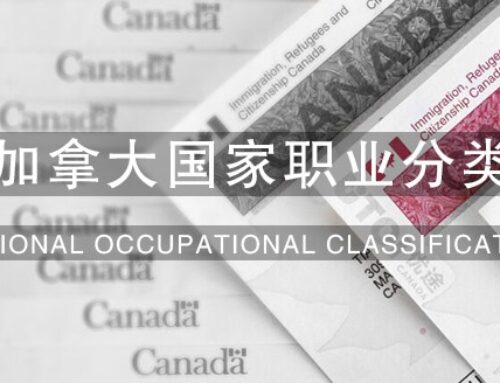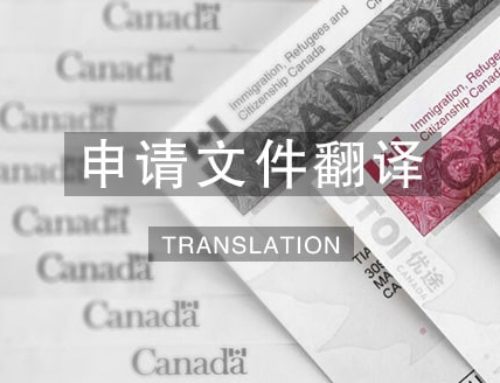加拿大新移民医疗保健获取指南 Get Healthcare in Canada: A Guide for Newcomers
文章内容 Table of Contents
- Canada Healthcare Overview
- What province has the best healthcare in Canada?
- Can Canadian immigrants get free healthcare?
- What do you need to get free healthcare in Canada?
- How long do you have to live in Canada to get free healthcare?
- Where can I find medical services in my area?
- How to get a family doctor in Canada
- How do I get immediate medical attention in Canada?
- Does Canadian health insurance cover prescription drugs?
- What is not covered by Canadian health care?
- Is mental health included in healthcare in Canada?
- Can you get private healthcare in Canada?
- Contact us for Assistance
加拿大医疗概览 CANADA HEALTHCARE OVERVIEW
该指南将全面的帮助您了解加拿大的医疗保健系统以及相关医疗服务。包括各省和地区医疗保健的差异、覆盖范围、等待期,以及健康卡的获取流程。此外,您还将了解包括如何寻找家庭医生、获取急救服务和处方药物、牙科、视力、其他健康服务和心理健康资源在内的医疗服务。同时,提供有关如何购买私人健康保险以补充公共医疗不覆盖的医疗服务。
掌握上述信息,您可以就自己的医疗保健需求做出选择,并在逐渐适应新生活的同时获取必要的服务。
In this comprehensive guide, newcomers to Canada will learn about the country’s healthcare system and the services available to them. This page will go into the details of provincial and territorial healthcare coverage, helping you understand the differences and similarities between regions. You will also find information about eligibility for healthcare coverage, including potential waiting periods, and the steps required to obtain a health card for you and your family.
Furthermore, this guide will help you navigate medical services, including finding a family doctor, accessing emergency services, and understanding prescription medications. We will also discuss dental, vision, additional health services, and mental health resources to support your well-being. Additionally, we’ll explore private health insurance options to supplement provincial/territorial public healthcare coverage. With this knowledge, you can make informed decisions about your healthcare needs and confidently access essential services as you settle into your new life in Canada.
加拿大哪个省的医保最好?WHAT PROVINCE HAS THE BEST HEALTHCARE IN CANADA?
加拿大的医疗保健体系,依托居民缴纳地税款运作。除某些特定处方药和治疗需要患者自行付费外,大部分公共医疗服务都是免费的。根据宪法,加拿大境内十个省份和三个地区的政府,通过特定的医保协议管理运行当地的健卫系统。因此,每个省份或地区的医保覆盖范围有所不同。我们强烈建议新移民通过购买私人医疗保险,以补充政府医保覆盖范围的不足。
以下是每个省份和地区医保覆盖的医疗服务清单。点击超链接,进入各省和地区对应的医保官方页面。
Healthcare in this country operates through a universal healthcare model funded through the taxes that residents pay annually. In most cases, public health services are free for all Canadians at the point of use, although certain medications (ex. prescription drugs) and treatments will require the recipient to pay out of pocket.
Under Canada’s Constitution, health care falls under the authority of the provinces and territories. Canada has 10 provinces and 3 territories. Public health services in each province and territory across Canada are managed by specific insurance plans and agreements in each region. Therefore, the services covered in each province or territory may differ. In each case, insurance to supplement public healthcare coverage is highly recommended.
Here is a list of what medical services are covered under each provincial and territorial healthcare plan. To read about each province/territory’s healthcare in greater detail, please visit the pages hyperlinked in each region’s section below.
阿尔伯塔省 Alberta (AB)
加拿大为何需要移民?Why Canada Needs Immigrants?
加拿大通过吸纳大量新移民,以保持其强劲的经济增长。
加拿大拥有世界上最老龄化的人口结构,以及最低的出生率;这导致了严重的经济与财政压力。较低的自然人口增长率,也导致劳动力市场人才紧缺与经济增长缓慢。缓慢的经济增长使得加拿大难以通过提高税收来支持教育、医疗保健和其他重要公共服务领域支出,以保证国民较高的生活标准。因此,自1980年代末以来,加拿大一直在提高其移民水平,以增加人口、劳动力和经济增长率。如今,加拿大依赖移民来实现其大部分人口和劳动力的增长,以便在更大程度上促进其经济发展。
如不加以干预,截止到2030年加拿大将有900万婴儿潮的一代人达到65岁的退休年龄。这意味着在加拿大医疗保健的社会支出明显增加之际,劳动力急剧下降。为缓解这一问题,加拿大一直在积极找寻应对方案,逐渐提高其移民水平,至今已超过30年。自1988年以来,加拿大每年接纳超过20万新移民。近年来,加拿大决定将其移民水平大幅提高到每年超过40万。加拿大目前的移民率接近1.2%。换而言之,与美国相比,加拿大的人均接纳移民数量是美国的三倍。
基于当前人口数量和移民趋势,加拿大很可能在可预见的未来,继续逐渐增加移民水平。移民将继续对支持加拿大保持健康的经济发展,和解决财政问题发挥关键作用。
此外,有充分的理据表明,新冠疫情更加凸显移民的重要性。新冠疫情在短期内削弱了加拿大经济,并导致政府在社会服务上的支出大幅增加。加拿大的出生率在2019年降至历史最低的每位女性对应1.47个新生儿。加之,疫情前就已经很低的出生率,以及后疫情时代由于经济的不确定性可能进一步降低出生率的可能性,未来几年加拿大将更加依赖移民实现人口增长。如果加拿大的出生率保持低迷,那么在未来几十年中,移民将占据劳动力增长的更大份额。最后,加拿大将需要通过移民加强税基,以支持疫情后的各项政府开支。
Canada welcomes high levels of immigration to keep its economy strong.
Canada has one of the world’s oldest populations and also one of the world’s lowest birth rates. This creates economic and fiscal pressures. Canada has a low rate of natural population growth which results in low rates of labour force and economic growth. Low economic growth makes it difficult for Canada to raise the taxes it needs to support social spending on services such as education, health care, and other important areas that provide high living standards in the country.
As a result, Canada has been increasing its immigration levels since the late 1980s to increase its rate of population, labour force, and economic growth. Canada now depends on immigration for the majority of its population and labour force growth and a larger share of its economic growth.
Consider that Canada will have 9 million baby boomers reach the retirement age of 65 by the year 2030. This means that Canada will have fewer workers at a time when its social spending on health care will rise. To alleviate this challenge, Canada has been proactive by gradually raising its immigration targets for over 30 years now.
Canada has regularly welcomed over 200,000 immigrants per year since 1988. In recent years, it has decided to increase its levels to well over 400,000 per year. Canada’s immigration rate now stands at nearly 1.2 per cent. In other words, Canada welcomes three times more immigrants on a per capita basis than then the United States of America.
Based on its demographic realities and its immigration trends, it appears likely that Canada will continue to gradually increase its immigration levels over the foreseeable future. Immigration will remain critical to supporting a healthy economy and fiscal situation in the country.
Moreover, a strong argument can be made that immigration’s importance has increased due to the coronavirus pandemic. COVID-19 has weakened the Canadian economy in the short run and increased government spending on social services. In addition, Canada’s birth rate fell to its lowest level ever of 1.47 children per woman in 2019. Given the low birth rate prior to the pandemic, and the chance the pandemic will reduce the birth rate even further due to economic uncertainty, Canada will become even more dependent on immigration for its population growth in the coming years. If Canada’s birth rate remains low, then immigration will comprise an even larger share of labour force growth in the decades to come. Finally, Canada will need to strengthen its tax base through immigration to support government spending following COVID-19.
加拿大移民项目概览 Overview of Canada’s Immigration Programs
经济类移民,是加拿大经济增长的主要推动力,占据未来多年移民数量整体规划中的一半以上。与此同时,预计近一半的经济移民将通过联邦快速通道系统实现:
加拿大的省提名项目(PNP),也在经济移民方面扮演重要角色。联邦政府允许参与项目的各省和地区,提名符合当地劳动力市场需求的移民候选人在获得省提名信后申请永久居住权。以下是加拿大公布的未来几年移民水平计划中涵盖的移民项目:
Economic immigration, which is a major driver of Canada’s economic growth, accounts for more than half of planned admissions through the multi-year levels plan. Nearly half of projected economic admissions will be through the federal Express Entry system programs:
- the Federal Skilled Worker (FSW) Program
- the Federal Skilled Trades Class (FST); and
- the Canadian Experience Class (CEC).
Canada’s Provincial Nominee Program (PNP) also plays an important role in terms of economic immigration. This program allows participating Canadian provinces and territories to nominate eligible immigration candidates who match local workforce needs for permanent residence. The following are immigration programs included in Canada’s Multi-Year Immigration Levels Plan:
经济类移民项目 Economic Programs
- (1). 联邦技术移民项目 Federal Skilled Worker (FSW) Program:
联邦技术移民项目归于加拿大快速通道系统管理,该联邦技术移民候选人无需在加拿大境内累积工作经验即可进入快速通道;但必须满足基于过往工作经验、语言能力和教育背景等因素累积的最低分数要求。入池后,在快速通道综合打分中具备竞争优势的候选人将受邀递交加拿大永久居民权申请。
This Express Entry-managed program is for immigrants with the requisite education, work experience, proficiency in English and/or French and other skills need to establish themselves economically in Canada. - (2). 联邦技术工人类别 Federal Skilled Trades Class (FSTC):
联邦技工移民项目是归属于加拿大快速通道系统管理的三个经济类技术移民项目之一。该项目为具有技工类经验的移民候选人提供申请永久居民权的机会。
The Express Entry-managed Federal Skilled Trades Class is for foreign workers with qualifications in a skilled trade. - (3). 加拿大经验类 Canadian Experience Class (CEC):
加拿大经验类移民是归属于加拿大快速通道系统管理的三个经济类技术移民项目之一。为已累积一定境内工作经验并希望成为永久居民的候选人提供一个主要移民途径。加拿大经验类移民的存在,是临时外籍劳工和国际毕业生继续累积加拿大工作经验的主要动因。
The Canadian Experience Class is managed by the Express Entry system and welcomes expressions of interest from foreign workers with Canadian work experience or recent graduates of Canadian educational institutions working in Canada. - (4). 大西洋移民项目 Atlantic Immigration Program (AIP):
大西洋移民项目是针对大西洋四省的移民计划。作为一个雇主驱动的项目,主要是为了保留技术移民和国际毕业生,促进加拿大经济增长和解决劳动力市场短缺问题。该项目仅针对海洋四省(新斯科舍省、新布伦瑞克省、爱德华王子岛省和纽芬兰和拉布拉多省)。
The Atlantic Immigration Program allows designated Atlantic employers to recruit and hire foreign skilled workers or international graduates in the Atlantic Canada region (Newfoundland and Labrador, Prince Edward Island, Nova Scotia, and New Brunswick). - (5). 保姆移民项目 Caregivers Program:
为儿童或具有高度医疗需求人士(老人)提供照顾的外籍保姆或护工,在符合条件的情况下有机会申请加拿大永久居留权。
Canada allows eligible foreigners caring for children and people with high medical needs the opportunity to apply for Canadian permanent residence. - (6). 联邦商业类(创业签证项目和自雇移民)Federal Business (Start-Up Visa Program and Self-Employed Person):
联邦商业类移民项目为符合要求的外籍企业家,在加拿大创建企业或购买经营现有企业并成为永久居民提供机会。
Federal business class programs allow foreigners who meet eligibility requirements the chance to run new or pre-existing businesses in Canada. - (7). 省提名项目 Provincial Nominee Program (PNP):
联邦政府允许参与项目的各省和地区,提名符合当地劳动力市场需求的移民候选人在获得省提名信后申请永久居住权。
This program allows participating provinces and territories to nominate eligible economic immigration candidates for Canadian permanent residence. - (8). 魁北克技术工人和魁北克商业移民 Quebec Skilled Worker Program and Quebec Business:
魁北克省在移民方面相对自治,拥有联邦制度之外的移民制度。魁省政府尚未公布2023至2026年度的移民水平规划。
The province of Quebec runs its own immigration system outside the federal system. The Government of Quebec’s planned levels for 2023 to 2026 have yet to be determined.
家庭团聚类别 Family Class Programs
- (1). 境内配偶或同居伴侣担保 Inland Spousal/Common-law Partner Sponsorship
- (2). 境外配偶或同居伴侣担保 Outland Spousal/Common-law Partner Sponsorship
- (3). 担保亲生或领养子女 Dependent Child
- (4). 父母及祖父母担保 Parents and Grandparents Program (PGP)
难民及庇护、人道主义和其他 Refugees and Protected Persons, Humanitarian and other
- (1). 境内庇护及海外家属 Protected Persons in Canada and Dependents Abroad
- (2). 重新安置-政府援助 Government-Assisted Refugees
- (3). 重新安置-私人援助 Privately-Sponsored Refugees
- (4). 重新安置-签证中心转介 Blended Visa Office Referred
联系优途安加获取签证移民法律协助 Contact the UtoImmigration for Assistance
优途安加签证移民事务所作为加拿大专注提供签证移民解决方案的领导机构之一,拥有超过13年的经验以及一支包含移民律师、助理律师、持牌移民顾问等专业人士在内的团队。致力于帮助我们的客户实现移民目标。我们的专业领域包括技术移民、商业移民、家庭团聚、工作许可、学习许可、入籍和拒签上诉。
Utoimmigration.com 作为优途安加的在线平台,自2012年上线以来逐步发展成全球范围内最值得新来的加拿大移民线上资源平台之一。与我们取得联系,以便我们协助您通过以下方式移民加拿大:
UtoImmigration Law Firm is one of Canada’s leading immigration law firms. We have over 13 years of experience and feature a team of over 30 Canadian immigration attorneys, paralegals, and other dedicated professionals.
We are dedicated to helping people achieve their Canadian immigration goals. We assist in areas including skilled worker immigration, business immigration, family sponsorship, work permits, study permits, citizenship, and inadmissibility.
Utoimmigration.com was founded in 2012 as the online presence of UtoImmigration Law Firm. Since then, this website has grown into one of the world’s most trusted resources on immigration to Canada. Please reach out for assistance. We’re happy to help:
技术工人项目 Skilled Worker Assistance
评估你是否符合近百种技术移民项目之一申请资格。
Find out if you are eligible to immigrate to Canada through one of the country’s over 100 skilled worker options.
家庭团聚移民 Family Sponsorship Assistance
评估你是否有资格担保家人,或被家人担保。
Find out if you are eligible to sponsor a loved one, or be sponsored.
其他签证移民咨询 Other Immigration Enquiries
联系我们咨询工签、学签、商业移民、入籍或其他法律事宜。
Contact us about work permits, study permits, business immigration, citizenship, and inadmissibility.
相关链接 Related Links
- 加拿大边境服务局 Canada Border Services Agency (CBSA)
- 劳动力市场影响评估批文广告要求 LMIA Advertising Requirements
- 优途安加签证移民事务所 About UtoImmigration Law Firm
- 加拿大移民部案件审理周期 IRCC’s Canadian Immigration Processing Times
- 加拿大移民水平计划 Canada’s Immigration Levels Plan 2023-2026
- 性少数群体的加拿大移民途径 Canadian Immigration Options for the LGBTQ2 Community
- 安大略省行政划分及教育资源 About Ontario
- 学历等级 Levels of Study
- 劳动力市场影响评估批文 Labour Market Impact Assessment (LMIA)
- 学习许可拒签及上诉 Study Permit Refusals and Appeals
- 勤工助学 Work While Studying
- 录取信 Letter of Acceptance (LOA)
- 移民监管协会 ICCRC:如何选择移民顾问 How to choose your immigration consultant
- 安家资金 Settlement Funds
- 加拿大入籍语言要求 Citizenship Language Requirement
- 指定院校 Designated Learning Institution(DLI)
- 家庭成员定义 Family Members
- 加拿大家庭最低收入标准 Low Income Cut-off(LICO)
- 省提名项目 Provincial Nominee Program(PNP)
- 加拿大语言水平分级指南 Canadian Language Benchmark Guide (CLB)
- 双重意图 Dual Intent
- 隐含身份 Maintained Status (previously called Implied Status)
- 加拿大国家职业分类 TEER NOC Code(NOC-TEER)
- 上诉和司法系统 Appeal, Judicial Review and Remedies
- 加拿大移民、难民及公民部 Immigration, Refugees and Citizenship Canada(IRCC)






